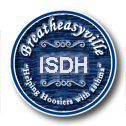 |
 |
Childhood asthma and allergies are increasing at epidemic rates, making asthma the leading chronic illness in U.S. children. Infant, toddler, pre-school and extended child care programs have seen an increasing number of children diagnosed with asthma. According to the Annie E. Casey Foundation, 70 percent of children under the age of five in the United States are in a full-time early care situation, with 3 out of 5 of those children in unlicensed care. As of April 2004, there were a total of 4,509 Indiana licensed child early care and educational settings in Indiana with: 3,239 licensed child care homes, 639 licensed child care centers and 631 registered ministries.
Children with asthma have special healthcare needs in the child care setting, most importantly an attentive child care provider that is aware of each of the environments children come into contact with including: classrooms, bathrooms, kitchen or lunchroom, indoor air, playground and outdoor air. IDEM has created a voluntary program for child care settings to aid in developing a healthy and safe learning atmosphere. The IDEM 5-Star Environmental Recognition Program for Child Care Facilities is an education and recognition project for child care settings that go beyond compliance with environmental, health, and safety regulations to further protect children and reach out to their families. Guidance in the 5-Star program will help early child care and educational settings reduce asthma environmental triggers.
Asthma “attacks” in children are commonly caused by allergies and/or environmental pollutants known as triggers. Increased asthma symptoms have been linked to poor indoor air quality. Children are particularly susceptible to air pollutants because they breathe a greater volume of air relative to their body weight. Additionally, pre-school aged children often crawl on the floor where there are higher levels of exposure to dust and pests (among other triggers.) Each child with asthma will have different triggers that may cause an attack. It is important for families to have a physician identify their child’s triggers and explain the child’s special needs to care providers.
Select a room to locate asthma triggers. Triggers will vary by room, so take a tour of each room.
Communication between families and early child care personnel is key to managing childhood asthma. Through education and understanding children with asthma can lead healthy, active lives. Choose one of the selected groups below for specific information on how you can help identify and reduce asthma triggers in an early child care and educational setting.